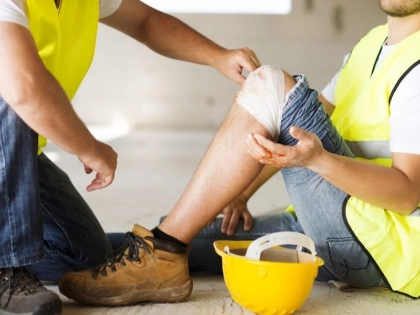Is Cycling Good For Your Knees?
Does Riding a Bike Help Your Knees?
The tendons and muscles that move the knee joint are the only things that allow it to move fluidly. These muscle groups can be strengthened by cycling, which will result in stronger knees and less joint stress.
Going too quickly or exercising too much, though, might place too much strain on the joints and result in pain. Learn how to prevent this by gradually increasing your riding time and using the right form.
1. This is a low-risk activity.

Cycling is an excellent kind of non-weight-bearing exercise, meaning that the force your knees already apply to the pedals is not added to when you cycle. Actually, as the pedals are turned in a controlled manner, your knee joints get lubricated and less rigid.
High-impact activities, such as jogging, on the other hand, can significantly increase the strain on weight-bearing joints like your hips, ankles, and knees.
Prior to a ride, make sure your bike fits you properly and warms up. When the knee expands past its normal straight position, it is known as hyperextension. This can be avoided with a saddle that fits properly.
To avoid imbalance and knee strain caused by overdevelopment of the quadriceps, you can also strengthen other leg muscles. Strengthening your core is also important because it keeps your knees from folding inward while you ride repeatedly on a bike.
2. It's a Fantastic Method to Burn Fat

Riding a bike is a great way to burn calories and tone your legs. Running and cycling are two different types of exercises that include bearing weight, so it's vital to understand this. During running, the legs bear the entire body weight and use that force to move the body ahead. When cycling, the knees don't have to bear the weight of the ligaments as they propel the bike ahead.
Like many other activities, cycling also encourages core involvement without jarring the torso. This is significant because a well-aligned knee can lessen the strain on the cartilage and joints by maintaining proper knee alignment.
If the form is incorrect or the muscles are not sufficiently conditioned, cycling might still lead to knee problems. For instance, when cycling, a common running ailment known as hyperextension can happen when the straight leg stretches past the perpendicular, putting undue strain on the ligaments and tendons in the knee joint. Gradually increasing your riding time and distance is the best method to avoid this.
3. It's a Fantastic Way to Keep Moving

Cycling can be an excellent way for people who have problems with their knee cartilage to strengthen the muscles that support their knee. It is not weight-bearing, and you may vary the resistance and speed of the pedals to customize the intensity of your workout.
The knee is a remarkable joint that is only able to move fluidly because of the surrounding muscles and tendons. Your quads, hamstrings, and calves work together to propel the pedals while you ride a bike.
But cycling can cause knee pain just like any other workout if you don't pay attention to your technique or if your bike isn't fitted properly. Excessive strain on your knees and other ligaments can result from hyperextension, which is when your knee extends beyond its normal straight posture. For this reason, it's critical to have a suitable bike fit and to train your knees as well as other muscles in your legs and hips. Additionally, when cycling, having strong core muscles might help protect your knees.
4. It's a Fantastic Way to Remain Well

Cycling is not only a fantastic form of exercise for your knees but also a great way to stay healthy. It is crucial to keep in mind that cycling is not an entirely injury-free exercise, even if it is a low-impact sport. Riding too hard, not utilizing the correct bike, or not warming up and stretching properly can all lead to injury.
Cycling is also beneficial for your knees because it strengthens the muscles surrounding the joint, which can lessen damage and preserve cartilage. This makes it perfect for those who already have knee issues, such as arthritis.
Running, on the other hand, can be detrimental to your knees since it places excessive strain on your legs and knees, which are meant to support your body weight as you propel yourself off the ground with each stride. Cycling is more fluid and much smoother, which may be better for the joints. The best part about cycling is that you can easily modify the intensity and speed to get the workout that works best for you.








